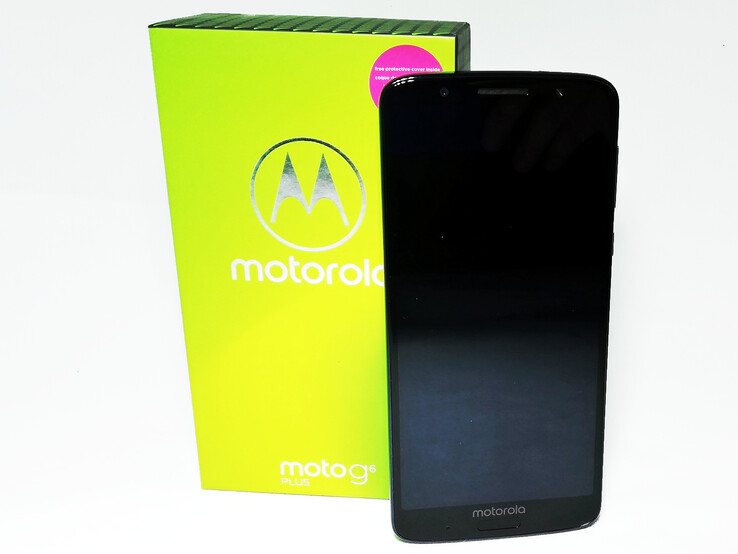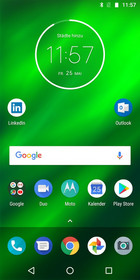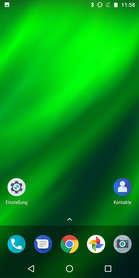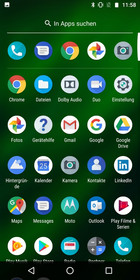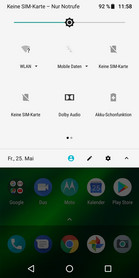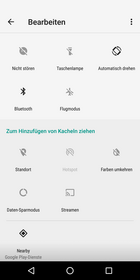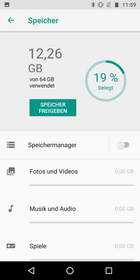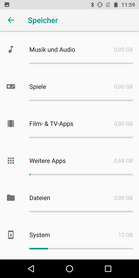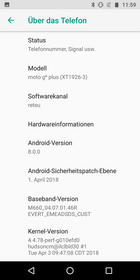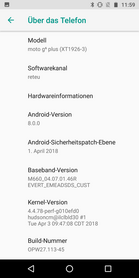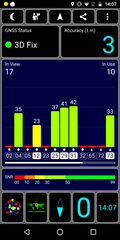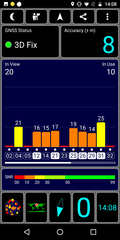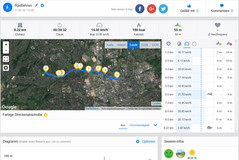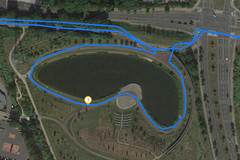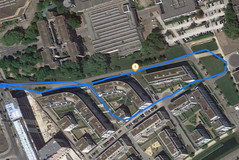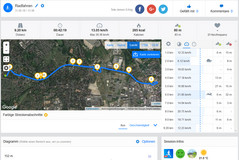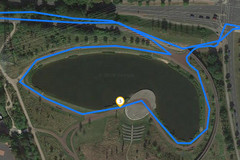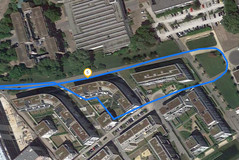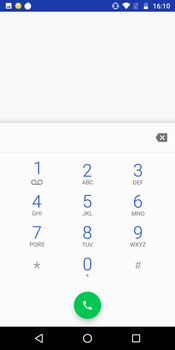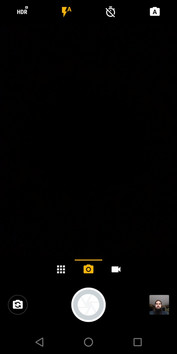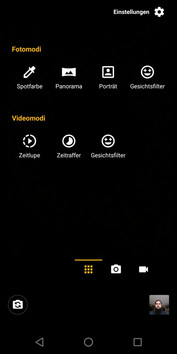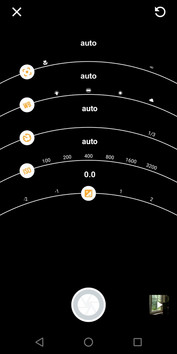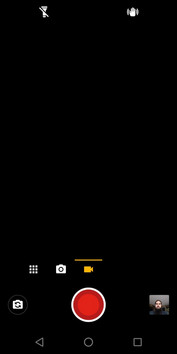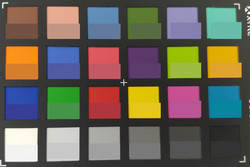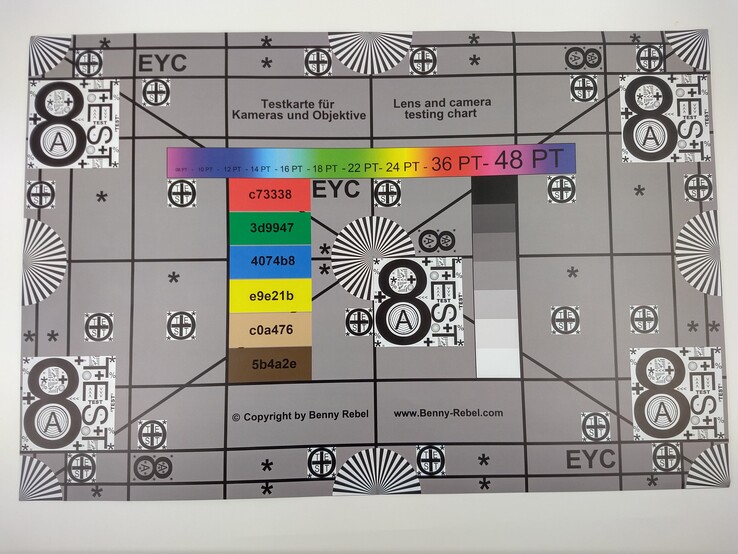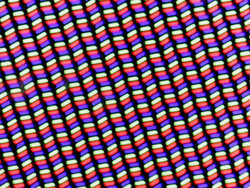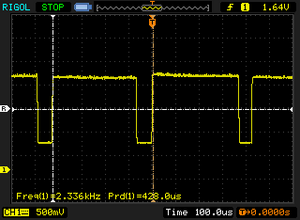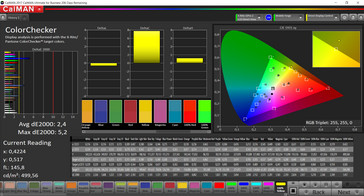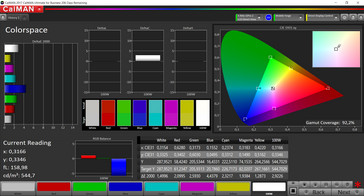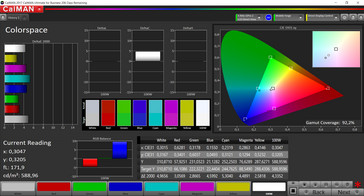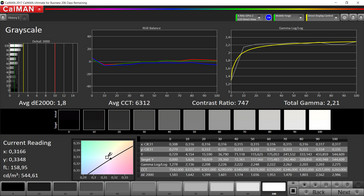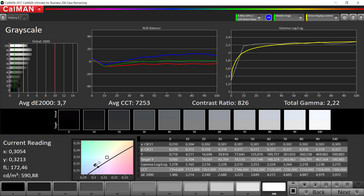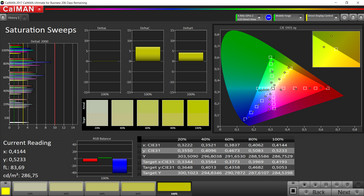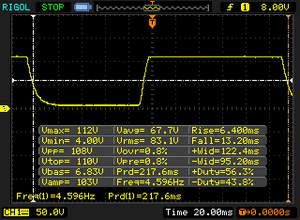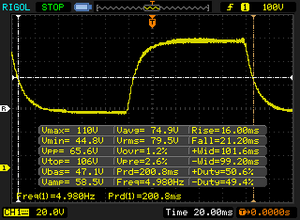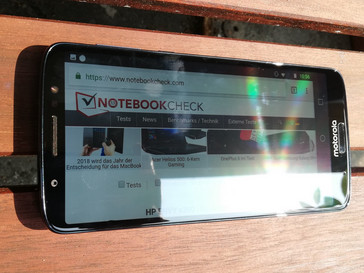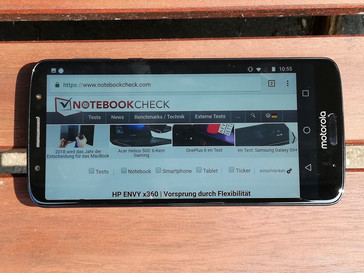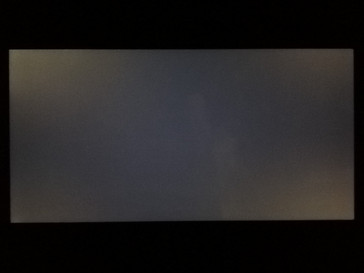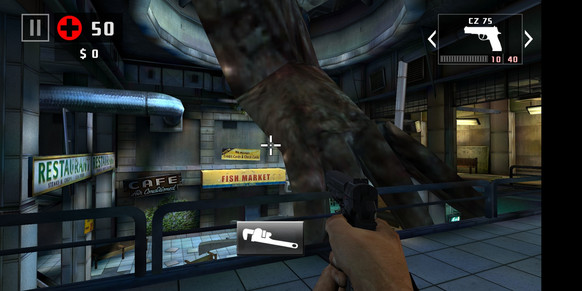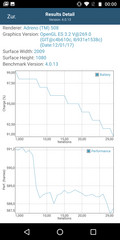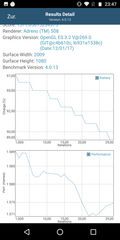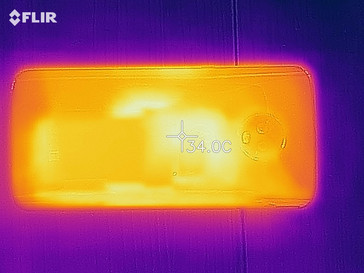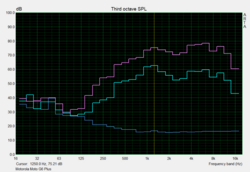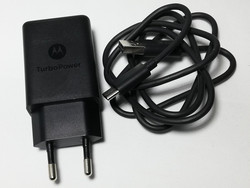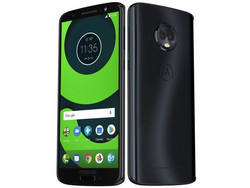Motorola Moto G6 Plus Smartphone Review
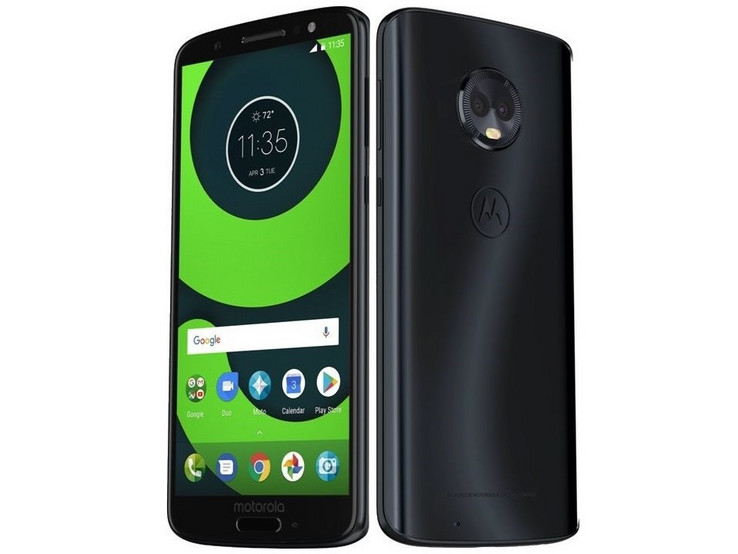
The Moto G6 Plus is the most powerful offspring of the Moto G6 series. Motorola had already left a good impression in our reviews of the Moto G6 and G6 Play, both of which offer a really good price-performance ratio. The Moto G6 Plus seems to be no different with a 12+5 MP dual camera, an 8 MP front camera, a Qualcomm Snapdragon 630, and an Adreno 508 graphics card, all at a price of 300 Euros (~$355).
With 4 GB of RAM and 64 GB of eMMC flash memory, the smartphone should have a good enough performance to leave behind a lot of competitors in its price range, at least on paper. To find out if the same can be said in reality, we compare the smartphone with other manufacturers' phones of a similar price range and performance level. Many phones would qualify for this, but we have confined ourselves to the Sony Xperia XA2, the HTC U11, and the Nokia 6 (2018). The Moto G5s Plus was released only six months ago and could be a good alternative to the G6 Plus for price-conscious customers, so we have also included this model in our comparison list.
Case - Motorola Smartphone with Glass Case
Motorola labels the material of the G6 Plus case as 3D glass. The manufacturer is following the overall trend of using more glass, as has been done for the Moto G6 and G6 Play. However, the material renders the device's back somewhat slippery and the material transitions at the sides of the phone have tangible edges. Overall, the Moto G6 Plus is edgier than other devices of the G6 series, but it also seems to be very robust and torsion-resistant.
A liquid-repellent P2i coating ensures that any water which comes into contact with the Motorola smartphone simply drips off. Motorola has placed the fingerprint sensor beneath the display. The dual camera at the back protrudes about one millimeter (~0.04 in) from the case. That, taken together with its slight bulge, causes the phone to wiggle when it is placed on a smooth surface. The Moto G6 Plus might slide down on slanting surfaces.
In comparison to its rivals, the Moto G6 Plus is significantly bigger, but not wider than other devices thanks to its 2:1 format. Its weight of 176 grams (~6.2 oz) is within the standard range for its class.
Features - Moto G6 Plus with Snapdragon SoC
A Qualcomm Snapdragon 630 SoC and an Adreno 508 GPU are supposed to take care of the advertized "great" performance of the Moto G6 Plus. The SoC as well as the GPU are slightly older than one year, but they offer a high enough performance for most Android applications and ensure a fluent experience with the system. In addition, the Moto G6 Plus is equipped with 4 GB of RAM and 64 GB of eMMC flash memory. The latter can be expanded up to 128 GB with a microSD card. Optionally, apps can also be installed on the SD card. The SD card tray offers room for up to two SIM cards at once, so the user is not forced to choose between an SD card and a second SIM.
The bottom of the Motorola smartphone houses a USB port and a 3.5 mm audio jack. The USB port is designed as a Type-C, but it still transfers data with the 2.0 standard, which is not unusual in this price range. OTG is possible, so external storage devices can be used. Plugs fit tightly into the audio jack and click into place. The smartphone also offers Wi-Fi, NFC, an FM radio receiver, and Bluetooth 5.0.
In addition to the fingerprint sensor, the Moto G6 Plus also has facial recognition and the Moto Key function. Moto Key enables the device to recognize the owner's Bluetooth devices nearby and to stay unlocked automatically in this case.
Software - Motorola with Android Oreo
Motorola has installed Android 8.0 with security patches from April 1, 2018. The adjustments are so minimal that users are presented with an almost pure Android system. Motorola also did not overdo it with the pre-installed apps. Only two third-party apps are included - LinkedIn and Outlook - and both can be uninstalled without any problems. Moto's own app introduces the user to the various configuration options for the G6 Plus and it assists the user in optimizing the system. Not only can the smartphone's voice control be used via the Google Assistant, but also via Moto Voice. The latter has slower reaction times than the Google Assistant, but better privacy policies.
Communication and GPS - Moto Smartphone with Good GPS
To differentiate it from the two other G6 models, Motorola has equipped the Moto G6 Plus with a connectivity that is better in every sense. In addition to GSM and 3G, users with LTE category 13 can enjoy fast download rates of up to 390 MBit/s. The upload speed is limited to LTE category 5, so the upstream can reach only 75 MBit/s.
The G6 Plus also stands out from its siblings when it comes to the Wi-Fi, since it supports not only the a/b/g/n standards, but also the faster ac standard. The transfer rates that we measured reached up to 300 MBit/s, which places the Motorola in the upper midfield of comparison devices. It should be noted, though, that the Wi-Fi module's range is rather low in everyday use. The Wi-Fi reception of the G6 Plus already suffered at a distance of only three meters (~10 ft) and without any barriers.
The fast Wi-Fi is accompanied by Bluetooth 5 and an NFC sensor.
| Networking | |
| iperf3 transmit AX12 | |
| HTC U11 | |
| Nokia 6 2018 | |
| Motorola Moto G6 Plus | |
| Sony Xperia XA2 | |
| Motorola Moto G5s Plus | |
| iperf3 receive AX12 | |
| HTC U11 | |
| Motorola Moto G6 Plus | |
| Sony Xperia XA2 | |
| Nokia 6 2018 | |
| Motorola Moto G5s Plus | |
The Motorola Moto G6 Plus utilizes GPS, A-GPS and GLONASS for position tracking. Outdoors, the user's current position can be determined with an accuracy of up to three meters (~10 ft) with the "GPS Test" app. Indoors, the device remains connected to the satellites and still reaches an accuracy of up to 8 meters (~26 ft).
The G6 Plus had to compete with the reference device Garmin Edge 500 during our mandatory bicycle ride. The Motorola phone's GPS was able to keep up and was even slightly more accurate in curves. The smartphone was able to account for minor deviations from the track very well, as long as no big buildings were nearby. Those can disturb the localization, which can result in deviations from the actual route.
Telephone Functions and Voice Quality - Good Connection with the Motorola G6 Plus
In terms of phone app, Motorola uses the standard Android app. Android users will be familiar with it right from the start and the G6 Plus does not show any weakness in this respect. All participants to a call are able to understand each other well and three microphones ensure a clear voice transfer. The hands-free mode also works really well. Even at higher volumes and from some distance to the Moto smartphone, call participants remain clearly audible.
As long as the user's provider supports these features, VoLTE and VoWLAN can be used with the G6 Plus as well.
Cameras - Good Dual Camera in the G6 Plus
Motorola's G6 flagship offers users a 12 + 5 MP dual camera on the back, which is equipped with dual auto focus and an f/1.7 aperture. Selfie enthusiasts can take portraits with the 8 MP front camera. Even indoors, good pictures which leave nothing to be desired can only be taken in daylight.
The main camera takes pictures that we really like. Landscape photographs as well as close-ups show pronounced colors and high details. Contours and color transitions are separated well. The low f-number of 1.7 gives the Moto G6 Plus quite the headstart for the image sensor exposure. Most rivals come with f-numbers higher than f/2.0, which often leads to darker pictures. Only the HTC U11 is able to keep up and has similarly good image results.
The automatic setting of the Moto G6 Plus is able to get the most out of the camera, and even HDR images can be taken with a really good quality. Users who prefer to manually adjust the image quality can use the professional mode to set the white balance, ISO, and exposure times. The customization options for video recordings are somewhat meagre in comparison. They are limited to deactivating the image stabilizer and switching on the LED lighting. The videos also have a good quality and the image stabilizer does its job well, reliably compensating for camera shakes of up to one centimeter in all directions.
We tested the color accuracy of the Moto G6 Plus with the ColorChecker Passport, which showed a tendency towards colors that are too bright and shades of dark gray and black that are too dark. The dual cam deals best with saturated shades of yellow, green, and cyan.
The Motorola smartphone is able to photograph our test chart well under controlled lighting conditions. The tendency for too much brightness still shows, though, but details and color gradients are easily discernible. Fine lines and structures remain clear even at the edges, but a slight paleness is visible at the lower corners.
Accessories and Warranty - Sparse Motorola Accessories for the G6 Plus
Motorola includes a protective case made out of silicone rubber, a USB power supply complete with a Type-C cable, and a SIM tool. The protective case fits perfectly on the smartphone and protects the waterproof phone from collisions. The manufacturer does not offer any additional accessories especially suited for the G6 Plus.
Motorola offers a warranty of 24 months. Please see our Guarantees, Return policies and Warranties FAQ for country-specific information.
Input Devices & Operation - GBoard for the Moto G6 Plus
Motorola has included Google's GBoard for users of the Motorola Moto G6 Plus. Even prolonged typing tasks can be completed fast and easily with this app. Each input is confirmed by a slight vibration. All keys are easily accessible in vertical as well as horizontal mode. The touchscreen reacts promptly and offers only a slight resistance for finger touches.
The features called "Moto Actions" expand the control options for the Moto G6 Plus even further. For example, shaking the device can execute a Quick Screenshot. Performing a swooshing gesture twice activates the flashlight, and raising the phone can mute the ringtone. Users can adjust the Motorola smartphone to their individual needs with these and other gestures.
Motorola has placed the fingerprint sensor beneath the display at the front. The sensor reacts quickly and reliably, enabling the user to unlock the phone with only minimal delay.
Display - Bright Smartphone Display by Motorola
The display of the Moto G6 Plus has a resolution of 2160x1080 pixels in the 2:1 format. The 5.9-inch IPS panel stands out from the competitors with its good brightness value of over 700 cd/m². The other smartphones from our comparison list do better than the G6 Plus in other respects, though.
One of the areas that the G6 Plus does not perform very well in is the distribution of brightness. The brightness is strongest in the center of the screen, but drops by up to 70 cd/m² at the edges. Furthermore, Motorola utilizes Pulse Width Modulation for brightness control. Since we only noticed the flickering at a brightness setting of lower than 6 percent and it also uses a relatively high frequency, even sensitive eyes should not encounter any problems in the long run.
Motorola protects the display with Corning Gorilla Glass 3 and equips it with the Moto Display feature. It mostly controls notifications on the locked display, but it is also able to detect when the phone is placed inside a trouser pocket and nothing has to be displayed at all.
| |||||||||||||||||||||||||
Brightness Distribution: 90 %
Center on Battery: 761 cd/m²
Contrast: 1103:1 (Black: 0.69 cd/m²)
ΔE ColorChecker Calman: 2.4 | ∀{0.5-29.43 Ø4.78}
ΔE Greyscale Calman: 1.8 | ∀{0.09-98 Ø5}
92.2% sRGB (Calman 2D)
Gamma: 2.21
CCT: 6312 K
| Motorola Moto G6 Plus IPS, 2160x1080, 5.9" | Motorola Moto G5s Plus IPS, 1920x1080, 5.5" | Sony Xperia XA2 IPS, 1920x1080, 5.2" | Nokia 6 2018 IPS, 1920x1080, 5.5" | HTC U11 Super LCD5, 2560x1440, 5.5" | |
|---|---|---|---|---|---|
| Screen | -29% | -71% | -85% | -6% | |
| Brightness middle (cd/m²) | 761 | 512 -33% | 513 -33% | 417 -45% | 482 -37% |
| Brightness (cd/m²) | 723 | 500 -31% | 506 -30% | 421 -42% | 472 -35% |
| Brightness Distribution (%) | 90 | 90 0% | 93 3% | 88 -2% | 90 0% |
| Black Level * (cd/m²) | 0.69 | 0.35 49% | 0.42 39% | 0.61 12% | 0.33 52% |
| Contrast (:1) | 1103 | 1463 33% | 1221 11% | 684 -38% | 1461 32% |
| Colorchecker dE 2000 * | 2.4 | 4.6 -92% | 5 -108% | 6.1 -154% | 3.2 -33% |
| Colorchecker dE 2000 max. * | 5.2 | 7.6 -46% | 11.4 -119% | 11.2 -115% | 5.4 -4% |
| Greyscale dE 2000 * | 1.8 | 3.8 -111% | 7.8 -333% | 7.1 -294% | 2.2 -22% |
| Gamma | 2.21 100% | 2.11 104% | 2.2 100% | 2.16 102% | 2.22 99% |
| CCT | 6312 103% | 6952 93% | 7964 82% | 8362 78% | 6581 99% |
* ... smaller is better
Screen Flickering / PWM (Pulse-Width Modulation)
| Screen flickering / PWM detected | 2336 Hz | ≤ 6 % brightness setting | |
The display backlight flickers at 2336 Hz (worst case, e.g., utilizing PWM) Flickering detected at a brightness setting of 6 % and below. There should be no flickering or PWM above this brightness setting. The frequency of 2336 Hz is quite high, so most users sensitive to PWM should not notice any flickering. In comparison: 53 % of all tested devices do not use PWM to dim the display. If PWM was detected, an average of 8111 (minimum: 5 - maximum: 343500) Hz was measured. | |||
The display of the Moto G6 Plus had good results in our test, but the competition was able to surpass it in several respects. While the contrast ratio can still be called good at 1103:1, the black value is far too high at 0.69. This causes shades of black to appear grayish, which is especially noticeable at the transitions of the display towards the frame of the device.
Users can adjust the Motorola smartphone's color representation to suit their individual preferences. While the color temperature can be varied from warm to neutral to cool, all modes also have a standard setting and a vibrant setting. The vibrant mode makes colors appear stronger and with a higher saturation. This mode resulted in a significantly higher DeltaH value in our CalMAN measurements. The choice of color temperature reduces/raises the proportion of blue in a given picture, with "cool" having the highest and "warm" having the lowest amount of blue.
Display Response Times
| ↔ Response Time Black to White | ||
|---|---|---|
| 19.6 ms ... rise ↗ and fall ↘ combined | ↗ 6.4 ms rise | |
| ↘ 13.2 ms fall | ||
| The screen shows good response rates in our tests, but may be too slow for competitive gamers. In comparison, all tested devices range from 0.1 (minimum) to 240 (maximum) ms. » 42 % of all devices are better. This means that the measured response time is similar to the average of all tested devices (20.2 ms). | ||
| ↔ Response Time 50% Grey to 80% Grey | ||
| 37.2 ms ... rise ↗ and fall ↘ combined | ↗ 16 ms rise | |
| ↘ 21.2 ms fall | ||
| The screen shows slow response rates in our tests and will be unsatisfactory for gamers. In comparison, all tested devices range from 0.165 (minimum) to 636 (maximum) ms. » 53 % of all devices are better. This means that the measured response time is worse than the average of all tested devices (31.6 ms). | ||
The IPS panel of the Motorola G6 Plus has a very high viewing angle stability. The smartphone's screen content remains legible from any imaginable position. The screen bleeding image shows the results of the uneven distribution of brightness. Slight screen bleeding effects can be seen in the corners, but this is hardly noticeable in everyday usage.
Performance - Only Average Performance by the Moto G6 Plus
The Moto G6 Plus is powered by Qualcomm's Snapdragon 630 and it is equipped with 4 GB of RAM as well as an Adreno 508 GPU. The 14 nm SoC with 8 cores clocks at up to 2.2 GHz and supports dual-channel LPDDR4 RAM. With these values, the G6 Plus exceeds its little brother Moto G6 by 400 MHz and also has a distinct advantage in terms of its RAM. The Moto G5s Plus positions itself near the middle between those two, with its Snapdragon 625 reaching at least 2 GHz, and with dual-channel RAM support.
The benchmark results of our test device are so-so. The G6 Plus almost always positions itself in front of the Moto G6, but is overtaken by the Moto G5s Plus sometimes. The Moto G6 Plus gets side-lined especially in the PCMark- and 3DMark benchmarks. Overall, though, it can confirm its midrange ranking, but the HTC U11 in particular outperforms it.
| AnTuTu v6 - Total Score (sort by value) | |
| Motorola Moto G6 Plus | |
| Motorola Moto G5s Plus | |
| Sony Xperia XA2 | |
| Nokia 6 2018 | |
| HTC U11 | |
| Motorola Moto G6 | |
| Average Qualcomm Snapdragon 630 (44128 - 73617, n=12) | |
| AnTuTu v7 - Total Score (sort by value) | |
| Motorola Moto G6 Plus | |
| Sony Xperia XA2 | |
| Nokia 6 2018 | |
| Motorola Moto G6 | |
| Average Qualcomm Snapdragon 630 (87300 - 90674, n=11) | |
| Lightmark - 1920x1080 1080p (sort by value) | |
| HTC U11 | |
| Motorola Moto G6 | |
| Average Qualcomm Snapdragon 630 (n=1) | |
| Basemark ES 3.1 / Metal - offscreen Overall Score (sort by value) | |
| HTC U11 | |
| Motorola Moto G6 | |
| Average Qualcomm Snapdragon 630 (n=1) | |
| Average of class Smartphone (205 - 7731, n=36, last 2 years) | |
The Moto G6 Plus is almost always ahead of the Moto G6 in the browser benchmarks as well. The HTC U11 again prevents the G6 Plus from taking the top position, though. Our subjective impression was quite decent. Browsing the Internet was fast and media content loaded quickly.
| JetStream 1.1 - Total Score | |
| HTC U11 (Chrome 58) | |
| Average Qualcomm Snapdragon 630 (27.4 - 30.8, n=12) | |
| Nokia 6 2018 (Browser: Chrome 65) | |
| Motorola Moto G6 Plus (Chrome 66) | |
| Sony Xperia XA2 (Chrome 65.0.3325.109) | |
| Motorola Moto G5s Plus (Chroem Version 62) | |
| Motorola Moto G6 (Chrome 66) | |
| Octane V2 - Total Score | |
| Average of class Smartphone (2228 - 121337, n=201, last 2 years) | |
| HTC U11 (Chrome 58) | |
| Motorola Moto G6 Plus (Chrome 66) | |
| Nokia 6 2018 (Browser: Chrome 65) | |
| Average Qualcomm Snapdragon 630 (4398 - 5202, n=13) | |
| Sony Xperia XA2 (Chrome 65.0.3325.109) | |
| Motorola Moto G5s Plus (Chroem Version 62) | |
| Motorola Moto G6 (Chrome 66) | |
| Mozilla Kraken 1.1 - Total | |
| Motorola Moto G6 (Chrome 66) | |
| Sony Xperia XA2 (Chrome 65.0.3325.109) | |
| Nokia 6 2018 (Browser: Chrome 65) | |
| Motorola Moto G6 Plus (Chrome 66) | |
| Average Qualcomm Snapdragon 630 (8396 - 10257, n=13) | |
| Motorola Moto G5s Plus (Chroem Version 62) | |
| HTC U11 (Chrome 58) | |
| Average of class Smartphone (257 - 28190, n=156, last 2 years) | |
| WebXPRT 2015 - Overall | |
| HTC U11 (Chrome 58) | |
| Nokia 6 2018 | |
| Motorola Moto G6 Plus (Chrome 66) | |
| Sony Xperia XA2 (Chrome 65.0.3325.109) | |
| Average Qualcomm Snapdragon 630 (86 - 117, n=10) | |
| Motorola Moto G6 (Chrome 66) | |
* ... smaller is better
The SD card reader in the Moto G6 Plus reads data from our reference card Toshiba Exceria Pro M501 at a good speed. The values that we measured surpass those of most of the rivals. Still, the G6 Plus can reach only the second place in our comparison list because the Sony Xperia XA2 reads data just a little faster than our test device.
The results for the internal storage are similar. The Moto G6 Plus comes second of our comparison list again, beaten by the significantly better result of the HTC U11. The write/read values of the Motorola smartphone are still really good, though. Apps start quickly and data access is not impeded by waiting times.
| Motorola Moto G6 Plus | Motorola Moto G5s Plus | Sony Xperia XA2 | Nokia 6 2018 | HTC U11 | Motorola Moto G6 | Average 64 GB eMMC Flash | Average of class Smartphone | |
|---|---|---|---|---|---|---|---|---|
| AndroBench 3-5 | -26% | -24% | -27% | 31% | -10% | -13% | 565% | |
| Sequential Read 256KB (MB/s) | 286.6 | 237.4 -17% | 271.5 -5% | 272.6 -5% | 717 150% | 238.2 -17% | 277 ? -3% | 2216 ? 673% |
| Sequential Write 256KB (MB/s) | 216.1 | 75.7 -65% | 127.4 -41% | 118.3 -45% | 206.4 -4% | 117.2 -46% | 178.4 ? -17% | 1837 ? 750% |
| Random Read 4KB (MB/s) | 58.4 | 37.94 -35% | 43.07 -26% | 38.78 -34% | 91.4 57% | 69.9 20% | 60.7 ? 4% | 294 ? 403% |
| Random Write 4KB (MB/s) | 62.8 | 44.89 -29% | 13.82 -78% | 15.3 -76% | 80 27% | 59.9 -5% | 33.8 ? -46% | 334 ? 432% |
| Sequential Read 256KB SDCard (MB/s) | 83.7 ? | 79.6 ? -5% | 86 ? 3% | 83.4 ? 0% | 68.8 ? -18% | 75.3 ? -10% | 77.4 ? -8% | |
| Sequential Write 256KB SDCard (MB/s) | 62.1 ? | 58.8 ? -5% | 64.8 ? 4% | 61.3 ? -1% | 46.25 ? -26% | 61.5 ? -1% | 58.3 ? -6% |
Games - Casual Games and More for the Moto G6 Plus
The Qualcomm Adreno 508 graphics unit ensures that the performance of the Moto G6 Plus suffices to play most games fluently. At 650 MHz, the clock speed is only slightly higher than for the Moto G6, in line with the midrange classification by the manufacturer. The Motorola smartphone was able to display moderately demanding games fluently at high details during our tests.
| Temple Run 2 | |||
| Settings | Value | ||
| default | 60 fps | ||
| Dead Trigger 2 | |||
| Settings | Value | ||
| high | 30 fps | ||
Emissions - The Motorola Smartphone Barely Heats Up
Temperature
The surface temperatures of the Moto G6 Plus are rather moderate. In idle mode, our test device remains mostly below 30 °C (~86 °F). Even under load, we measured a maximum of 36 °C (~97 °F). With these results, the Motorola smartphone is able to leave behind its competitors, which reach more than 40 °C (~104 °F) under load in some cases.
We tested the SoC's performance stability under constant load with the GFXBench scenarios called T-Rex (OpenGL ES 2.0) and Manhattan (OpenGL ES 3.1). With the exception of a few minor fluctuations, which barely had any influence on the system operation, we did not detect any anomalies.
(+) The maximum temperature on the upper side is 36 °C / 97 F, compared to the average of 35.2 °C / 95 F, ranging from 21.9 to 247 °C for the class Smartphone.
(+) The bottom heats up to a maximum of 32.2 °C / 90 F, compared to the average of 34 °C / 93 F
(+) In idle usage, the average temperature for the upper side is 30.2 °C / 86 F, compared to the device average of 32.9 °C / 91 F.
Speakers
The speaker of the Moto G6 Plus has a comparatively high volume and a moderately balanced sound spectrum. Users have to do without low mids, but the highs are almost entirely represented. However, the sounds start to get distorted at higher volumes. Our pink noise measurements with comparable devices show that the speakers of the G6 Plus are able to compete with most smartphones of this price range.
Motorola Moto G6 Plus audio analysis
(+) | speakers can play relatively loud (86.3 dB)
Bass 100 - 315 Hz
(-) | nearly no bass - on average 26.3% lower than median
(±) | linearity of bass is average (7.9% delta to prev. frequency)
Mids 400 - 2000 Hz
(+) | balanced mids - only 3.9% away from median
(+) | mids are linear (5.4% delta to prev. frequency)
Highs 2 - 16 kHz
(+) | balanced highs - only 4.6% away from median
(+) | highs are linear (5.1% delta to prev. frequency)
Overall 100 - 16.000 Hz
(±) | linearity of overall sound is average (18.7% difference to median)
Compared to same class
» 21% of all tested devices in this class were better, 9% similar, 69% worse
» The best had a delta of 11%, average was 35%, worst was 134%
Compared to all devices tested
» 42% of all tested devices were better, 8% similar, 50% worse
» The best had a delta of 4%, average was 24%, worst was 134%
Nokia 6 2018 audio analysis
(+) | speakers can play relatively loud (87.2 dB)
Bass 100 - 315 Hz
(-) | nearly no bass - on average 29.6% lower than median
(±) | linearity of bass is average (7.2% delta to prev. frequency)
Mids 400 - 2000 Hz
(+) | balanced mids - only 4.4% away from median
(±) | linearity of mids is average (7% delta to prev. frequency)
Highs 2 - 16 kHz
(±) | higher highs - on average 6.9% higher than median
(+) | highs are linear (3.2% delta to prev. frequency)
Overall 100 - 16.000 Hz
(±) | linearity of overall sound is average (23.2% difference to median)
Compared to same class
» 52% of all tested devices in this class were better, 7% similar, 41% worse
» The best had a delta of 11%, average was 35%, worst was 134%
Compared to all devices tested
» 69% of all tested devices were better, 5% similar, 26% worse
» The best had a delta of 4%, average was 24%, worst was 134%
Battery Life - The Moto G6 Plus Has a Good Battery
Energy Consumption
Our test device's power consumption is slightly above average. We measured a maximum power consumption of 5.14 watts, which places the Moto G6 Plus in the midfield of our comparison devices.
The included 15-watt power supply comes with a fast charge feature, which can fully charge the battery of the G6 Plus in just about 3 hours.
Update: Our retest revealed that the Moto G6 Plus was already fully charged after about 1 hour and 50 minutes.
| Off / Standby | |
| Idle | |
| Load |
|
Key:
min: | |
| Motorola Moto G6 Plus 3200 mAh | Motorola Moto G5s Plus 3000 mAh | Sony Xperia XA2 3300 mAh | Nokia 6 2018 3000 mAh | HTC U11 3000 mAh | Motorola Moto G6 3000 mAh | Average Qualcomm Snapdragon 630 | Average of class Smartphone | |
|---|---|---|---|---|---|---|---|---|
| Power Consumption | -14% | 10% | -1% | -30% | 2% | -18% | -54% | |
| Idle Minimum * (Watt) | 0.5 | 0.83 -66% | 0.39 22% | 0.67 -34% | 0.73 -46% | 0.6 -20% | 0.732 ? -46% | 0.848 ? -70% |
| Idle Average * (Watt) | 1.78 | 1.67 6% | 1.61 10% | 1.76 1% | 1.96 -10% | 1.81 -2% | 1.835 ? -3% | 1.434 ? 19% |
| Idle Maximum * (Watt) | 1.81 | 1.85 -2% | 1.62 10% | 1.78 2% | 1.98 -9% | 1.86 -3% | 2.16 ? -19% | 1.618 ? 11% |
| Load Average * (Watt) | 3.3 | 3.47 -5% | 3.12 5% | 2.82 15% | 4.82 -46% | 2.78 16% | 3.81 ? -15% | 7.01 ? -112% |
| Load Maximum * (Watt) | 5.14 | 5.41 -5% | 4.92 4% | 4.56 11% | 7.15 -39% | 4.04 21% | 5.62 ? -9% | 11.3 ? -120% |
* ... smaller is better
Battery Runtime
Motorola has equipped the Moto G6 Plus with a 3200 mAh battery, which lasted for 11 hours 42 minutes in our Wi-Fi test. This is a good result, but it suffices only for a rank in the midfield of our comparison group. Other than the Sony and Nokia rivals, even the Moto G5s had a significantly longer runtime.
| Motorola Moto G6 Plus 3200 mAh | Motorola Moto G5s Plus 3000 mAh | Sony Xperia XA2 3300 mAh | Nokia 6 2018 3000 mAh | HTC U11 3000 mAh | Motorola Moto G6 3000 mAh | |
|---|---|---|---|---|---|---|
| Battery runtime | 8% | 20% | 12% | -27% | -16% | |
| Reader / Idle (h) | 30.8 | 24.9 -19% | 41.7 35% | 30.6 -1% | 20.8 -32% | 19.5 -37% |
| H.264 (h) | 9 | 12.8 42% | 11.3 26% | 8.3 -8% | 10 11% | |
| WiFi v1.3 (h) | 11.7 | 16.2 38% | 14.8 26% | 15.7 34% | 9.3 -21% | 9.2 -21% |
| Load (h) | 6.7 | 7 4% | 5 -25% | 6 -10% | 3.5 -48% | 5.6 -16% |
Pros
Cons
Verdict - The G6 Plus Has Many Rivals
The Moto G6 Plus is the culmination of the current Moto G6 series by Motorola. Hence, the hardware stands in strong contrast to that of the other G6 models. In comparison with other smartphones for about 300 Euros (~$355), the G6 Plus stands out in only very few areas, mostly consisting of the camera and the additional features of the Moto software. The pure performance values sadly do not suffice to put the rivals into any kind of predicament.
With the Moto G6 Plus, Motorola is offering a powerful midrange smartphone. However, it is beleaguered not only by external rivals, but also by the good alternatives in Motorola's own ranks.
Buyers of the G6 Plus will receive a smartphone that certainly lives up to the expectations for a midrange device. Budget-oriented potential buyers might be better served with the Moto G5s. If the inferior camera does not bear a high relevance, this smartphone's performance is almost the same as the successor model's. In addition, other manufacturers also offer powerful smartphones in the 300-Euro range. In the end, personal preference will be the deciding factor in which device to choose.
Motorola Moto G6 Plus
- 06/04/2018 v6 (old)
Mike Wobker






